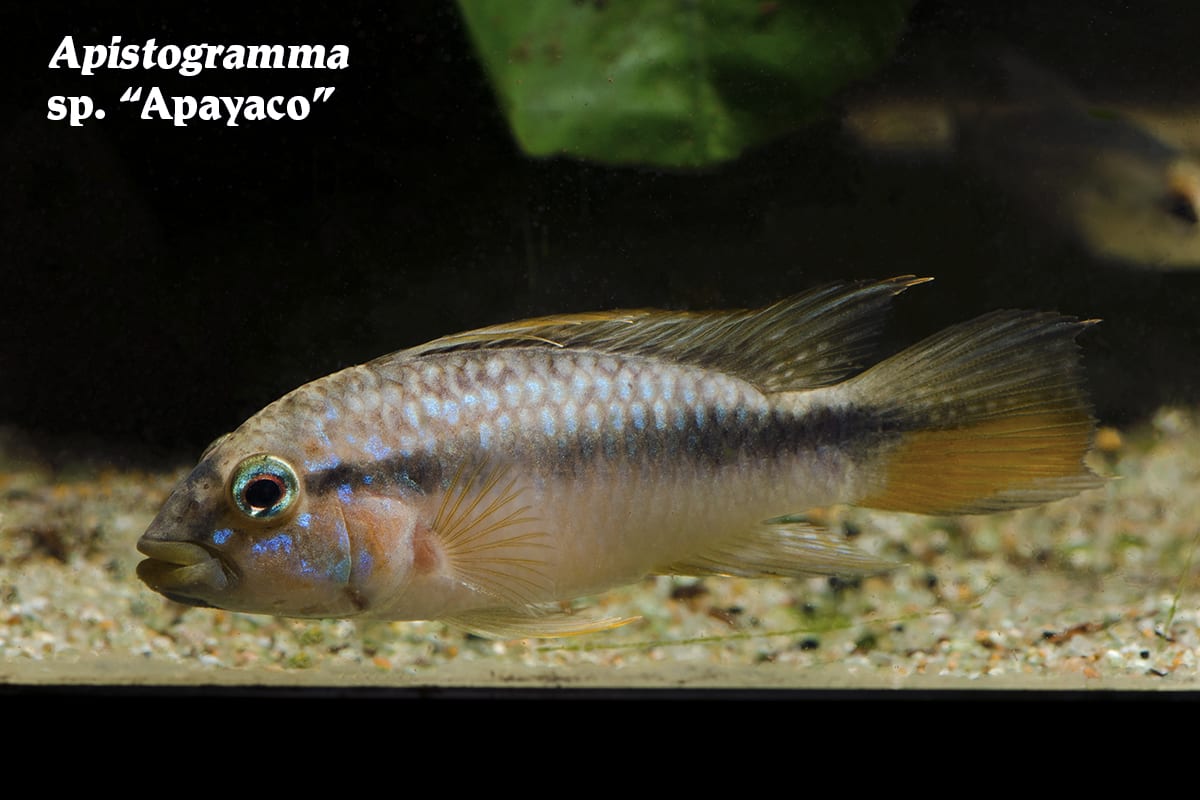Scientific Aquarian
Scientific Aquarian
What makes us who we are? Are we slaves to the genes our parents gave us, or does the environment we live in have enough influence to overcome those factors? If you’re like me, these are the questions that keep you up at night (and don’t even get me started on free will)…But, a biology education and years of accumulating bits of information about what makes life on earth tick have led to a most comforting realization: barring disease, our genes and environments work in tandem to produce the best approximation of what we need. Anyways…these are the thoughts that flashed through my mind this week when I learned that there are at least 33 Apistogramma species whose offspring undergo environmental sex determination. Originally documented by the prodigious Uwe Romer (author of the must-have Apistogramma Atlas for any enthusiast with 300 bones to spare), the sex ratio of many Apisto clutches are determined by the temperature and pH of the water. Male bias occurs at higher temperatures and lower pH and female bias in the reverse conditions. So, in honor of this mind-blowing discovery, this week we’ll highlight a few species from Romer’s favorite South American cichlid genus: Apistogramma barlowi, Apistogramma sp. “Apayaco”, and Apistogramma sp. “Putumayo”.
Apistogramma spp. are often found in slow-moving soft waters with marginal vegetation and plenty of shade, and they generally do best in well-structured tanks with plenty of cover. Possible furnishings include overturned ceramic pots, lengths of pvc pipe, caves, and wood roots or branches. Light should be low, or at least filtered through tall or floating plants, and some water flow is ideal, provided by something akin to a low-powered sponge filter. In the wild, apistos are mostly micropredators and will do best (especially if breeding is your goal) when fed live and frozen meals like blackworm or brine, but they will accept high-quality dried foods in a pinch. Generally peaceful, they should be kept as a single pair alongside a number of South American dither fish like Nannostomus,small tetras, and hatchetfish, and some bottom dwellers or algae eaters like Otocinclus or Ancistrus. Tank waters are best kept with temperatures between 72 and 80°F, pH of 4.5 to 6.5, and hardness around 18 to 90 ppm.
Scientific NameApistogramma barlowi
Common NameBarlowi Apisto
Temperature / pH72 to 80°F / 4.5 to 6.5 pH
Native LocationPeru
Preferred DietSmall invertebrates
Found in cooler forest streams of northern Peru, A. barlowi is a lesser-known apisto beauty than its sympatric Apistogramma agassizi cousin. Unique in appearance, and behaviors, this species is a rare find. Males reach 2.5 inches in length, and exhibit tan bodies with a dark mask-like stripe, a thick lateral stripe, shiny green scaling on the face and sides, orange cheeks and chins, and extended fins. Females are a bit smaller reaching just 1.5 inches, and have tan bodies that yellow during spawning, and black spots.
Scientific NameApistogramma sp. “Apayuco”
Common NameApayuco Apisto
Temperature / pH72 to 80°F / 4.5 to 6.5 pH
Native LocationPeru
Preferred DietSmall invertebrates
| Found west of the Pebas in the Rio Apayaco tributary of the Amazon in Peru, A.sp. “Apayaco” is similar, but allopatric to A. barlowi. Males are the larger sex, not quite reaching 3 inches, and exhibit a dark lateral line on a greenish body with blue hue on the anal and caudal fins. Females are smaller in body with yellow coloration and a facial stripe. |
Scientific NameApistogramma sp. “Putumayo”
Common NamePutumayo Apisto
Temperature / pH72 to 80°F / 4.5 to 6.5 pH
Native LocationPeru
Preferred DietSmall invertebrates
Described from the Rio Putumayo drainage of Peru, A. sp. “Putumayo” is thought to be similar to Apistogramma cruzi, though different enough at this point that they are classified separately. They exhibit a range of coloration within the species, though males generally show a black facial stripe, black banding across the tops of their sides, parallel lines of red dots below that, blue anal fins, and red and blue patterning on the dorsal and caudal fins. Maximum size is just around 2 inches for males, but contrary to their small size, they are a bit more aggressive than most other Apistogramma, and will spend more time in open water space.
There is still so much we don’t know about the world we live in and all the other organisms that live here too. Observations and findings seem to lead endlessly down a rabbit hole of more questions. For instance, why might warmer temperatures and higher acidity in their environments produce more apisto males than females? What is the mechanism, and what is the evolutionary benefit? You certainly don’t have to be an academic to ponder these questions or to make and share your own anecdotal observations. I truly believe that the more people who foster this type of curiosity in their own homes as hobbyists, the better the world will be. So, here’s to the scientific empowerment of all aquarists!


